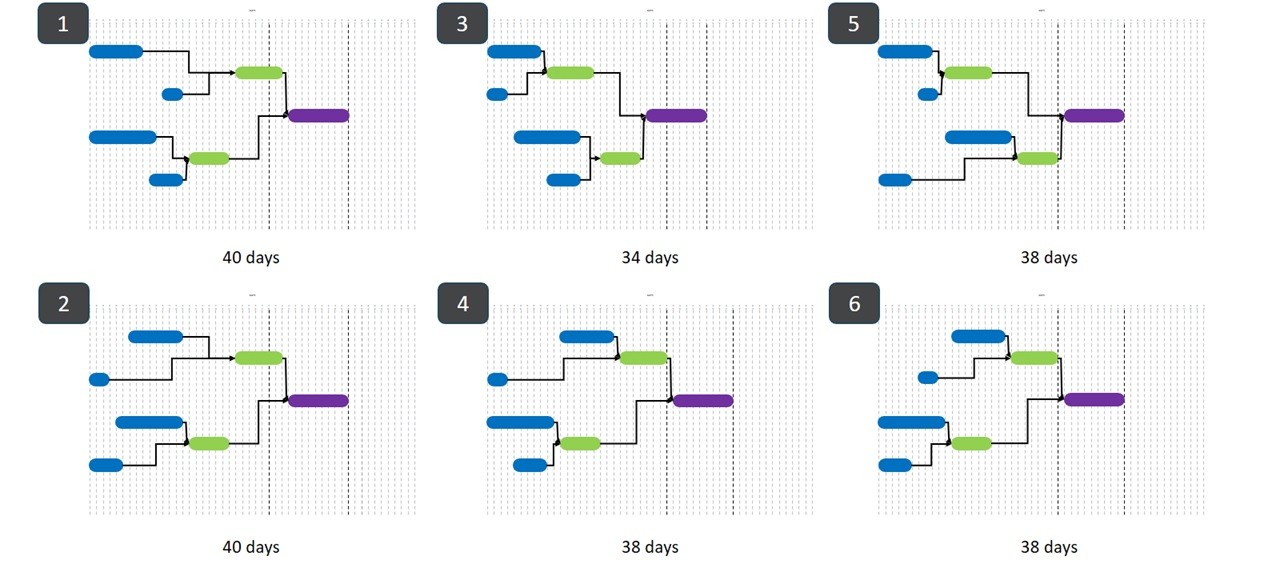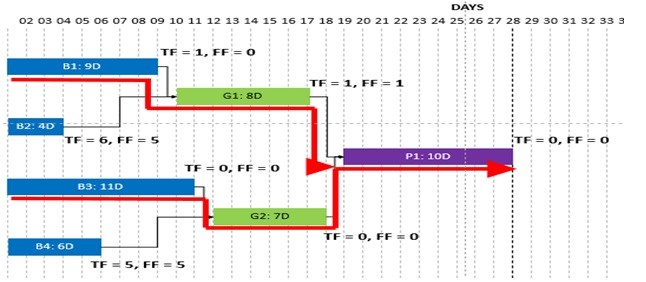How much damage can resource shortages do to projects really? – Part 2

Let us start with the answers to the questions posed in the previous article –
i. How much time will it take by the Critical Path logic (Float sorting, ascending)?
40 days (Option 1)
ii. How many possible ways are there to execute?
Theoretically, 24. However, if we assume rational decision-making, then 14
iii. What is the best time in which the project can be executed?
34 Days (Option 3)
iv. Is there any known logic by which we can arrive at the answer of (iii)?
No
v. What is the range of possible answers (Maximum delay/ Minimum delay)?
Due to 50% shortage of resources –
Best case: 34 days – delay of 6 days over the 28-day plan
Worst case: 40 days – delay of 12 days over the 28-day plan
Worst case incurs 2 times the delay of the best case
Additionally, most of the possible outcomes are closer to the worst. Only 1 of the 14 is close to the best
What we can conclude from the results are the following:
a. As mentioned by Kelley and Walker, Critical Path method does not guarantee optimal solutions
b. If we apply it nevertheless, it can multiply the delays (causes 2 times the delay in this case)
c. Depending on the choices made, there is a different impact on the project
d. There is no known logic by which we can ensure an efficient resource allocation
If the above is true, what do you think happens in real projects with thousands of tasks and hundreds of resources when shortages are faced left, right and center?
Are the local choices made by different individuals all throughout the life cycle of the project going to allow synchronization, control or predictability?
.png?width=642&height=150&name=Logo%20(1).png)

